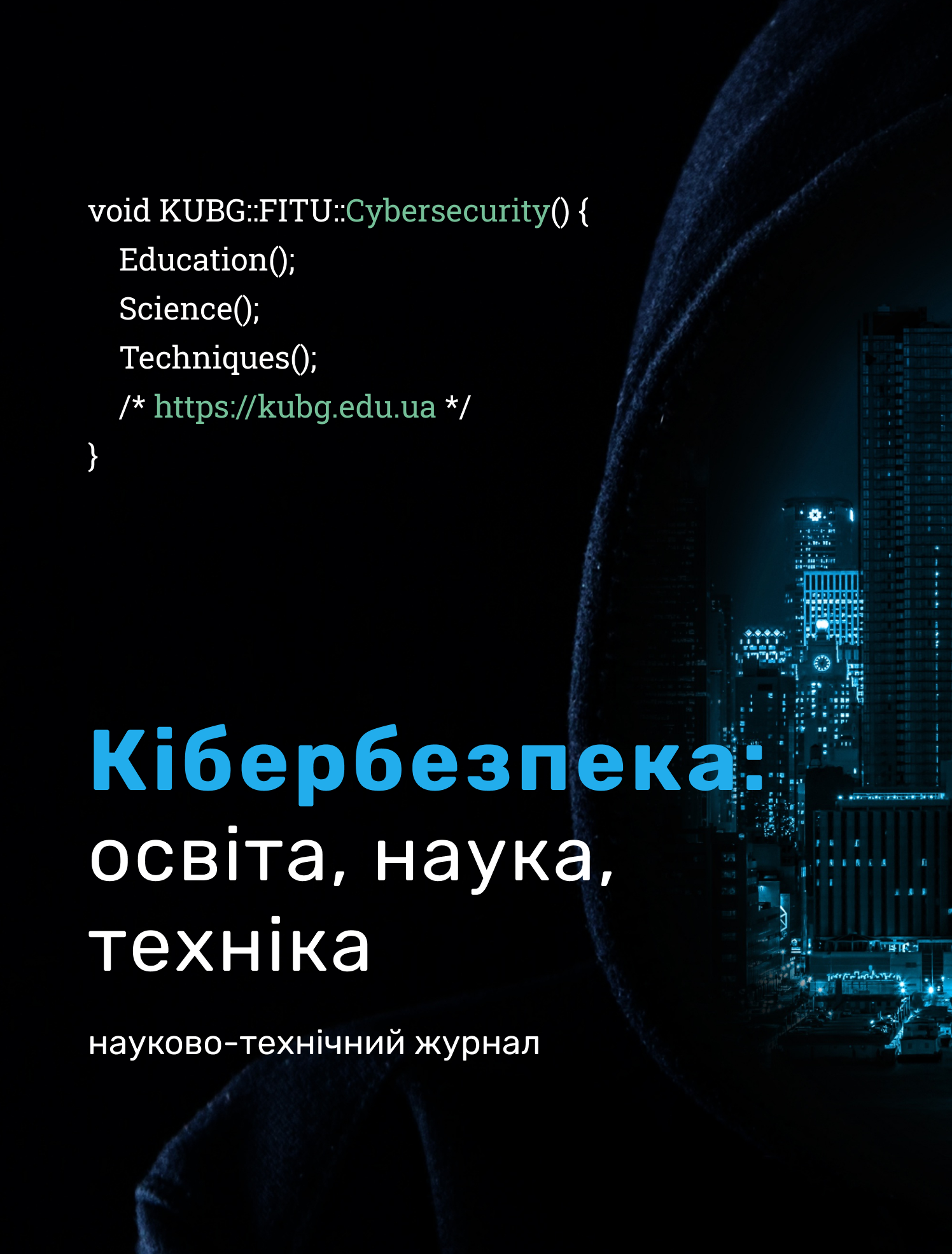ANALYSIS OF TRAINING METHODS AND NEURAL NETWORK TOOLS FOR FAKE NEWS DETECTION
DOI:
https://doi.org/10.28925/2663-4023.2023.20.2034Keywords:
fake news; fake news detection tools; neural networks; learning methods; methods for detecting disinformation and fake news on the InternetAbstract
This article analyses various training methods and neural network tools for fake news detection. Approaches to fake news detection based on textual, visual and mixed data are considered, as well as the use of different types of neural networks, such as recurrent neural networks, convolutional neural networks, deep neural networks, generative adversarial networks and others. Also considered are supervised and unsupervised learning methods such as autoencoding neural networks and deep variational autoencoding neural networks.
Based on the analysed studies, attention is drawn to the problems associated with limitations in the volume and quality of data, as well as the lack of efficiency of tools for detecting complex types of fakes. The author analyses neural network-based applications and tools and draws conclusions about their effectiveness and suitability for different types of data and fake detection tasks.
The study found that machine and deep learning models, as well as adversarial learning methods and special tools for detecting fake media, are effective in detecting fakes. However, the effectiveness and accuracy of these methods and tools can be affected by factors such as data quality, methods used for training and evaluation, and the complexity of the fake media being detected. Based on the analysis of training methods and neural network characteristics, the advantages and disadvantages of fake news detection are identified. Ongoing research and development in this area is crucial to improve the accuracy and reliability of these methods and tools for fake news detection.
Downloads
References
Vosoughi, S., Roy, D., Aral, S. (2018). The spread of true and false news online. Science, 359(6380), 1146–1151. https://doi.org/10.1126/science.aap9559
Kulsoom, F., Narejo, S., Mehmood, Z., Chaudhry, H. N., Butt, A., Bashir, A. K. (2022). A review of machine learning-based human activity recognition for diverse applications. Neural Computing and Applications, 34(21), 18289–18324. https://doi.org/10.1007/s00521-022-07665-9
Singh, B., Sharma, D. K. (2021). Predicting image credibility in fake news over social media using multi-modal approach. Neural Computing and Applications, 34(24), 21503–21517. https://doi.org/10.1007/s00521-021-06086-4
Zhou, X., Zafarani, R. (2020). A Survey of Fake News. ACM Computing Surveys, 53(5), 1–40. https://doi.org/10.1145/3395046
Vosoughi, S., Mohsenvand, M. N., Roy, D. (2017). Rumor Gauge. ACM Transactions on Knowledge Discovery From Data, 11(4), 1–36. https://doi.org/10.1145/3070644
Chen, W., Zhang, Y., Yeo, C. K., Lau, C. T., Lee, B. S. (2018). Unsupervised rumor detection based on users’ behaviors using neural networks. Pattern Recognition Letters, 105, 226–233. https://doi.org/10.1016/j.patrec.2017.10.014
O'Brien, N., Latessa, S., Evangelopoulos, G., Boix, X. (2018). The Language of Fake News: Opening the Black-Box of Deep Learning Based Detectors.
Khan, J. Y., Khondaker, M. T. I., Afroz, S., Uddin, G., Iqbal, A. (2021). A benchmark study of machine learning models for online fake news detection. Machine Learning With Applications, 4, 100032. https://doi.org/10.1016/j.mlwa.2021.100032
About Us.. Factmata. https://factmata.com/about-us/
Introducing ChatGPT.. Introducing ChatGPT. https://openai.com/blog/chatgpt
Inc., V. Fakebox · Docs · Machine Box · Machine learning in a box. Fakebox · Docs · Machine Box · Machine Learning in a Box. https://machinebox.io/
Falcone, J., & bio, S. F. (2023). Looking for Great Deals? Use CNET Shopping to Save Time and Money. CNET. https://www.cnet.com/tech/services-and-software/use-cnet-shopping-to-seek-out-the-best-deals/
Khanam, Z., Alwasel, B. N., Sirafi, H., Rashid, M. (2021). Fake News Detection Using Machine Learning Approaches. IOP Conference Series: Materials Science and Engineering, 1099(1), 012040. https://doi.org/10.1088/1757-899x/1099/1/012040
Shad, H. S., Rizvee, M. M., Roza, N. T., Hoq, S. M. A., Monirujjaman Khan, M., Singh, A., Zaguia, A., Bourouis, S. (2021). Comparative Analysis of Deepfake Image Detection Method Using Convolutional Neural Network. Computational Intelligence and Neuroscience, 2021, 1–18. https://doi.org/10.1155/2021/3111676
Transformer neural networks are shaking up AI | TechTarget. Enterprise AI. https://www.techtarget.com/searchenterpriseai/feature/Transformer-neural-networks-are-shaking-up-AI
Transformer Neural Network. (2020). DeepAI. https://deepai.org/machine-learning-glossary-and-terms/transformer-neural-network
Rocca, J. (2021). Understanding Generative Adversarial Networks (GANs). Medium. https://towardsdatascience.com/understanding-generative-adversarial-networks-gans-cd6e4651a29
Deep Neural Networks. Deep Neural Networks. https://www.tutorialspoint.com/python_deep_learning/python_deep_learning_deep_neural_networks.htm
Patwari, K., Hafiz, S. M., Wang, H., Homayoun, H., Shafiq, Z., Chuah, C. N. (2022). DNN Model Architecture Fingerprinting Attack on CPU-GPU Edge Devices. 2022 IEEE 7th European Symposium on Security and Privacy (EuroS&P). https://doi.org/10.1109/eurosp53844.2022.00029
Published
How to Cite
Issue
Section
License
Copyright (c) 2023 Admin Skladannyi; Віталій Тищенко

This work is licensed under a Creative Commons Attribution-NonCommercial-ShareAlike 4.0 International License.




